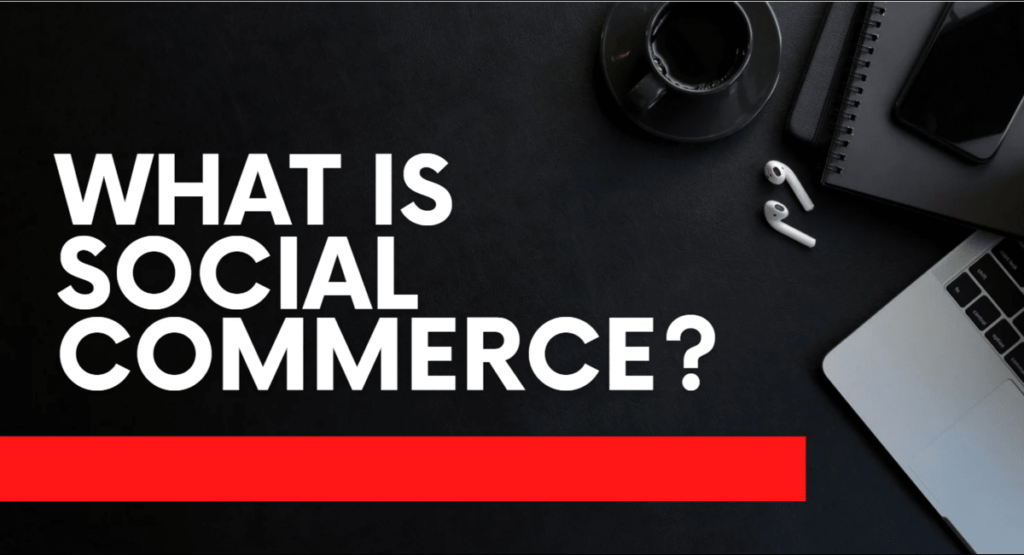Introduction
When e-commerce and social media platforms are integrated, consumers can utilise social media channels to look for, research, and buy things. This is referred to as social commerce. Social media purchasing is becoming more and more popular, which is why it’s an essential component of digital marketing tactics. This strategy uses tailored advertising and social media interactions to increase user engagement and purchases.
Brief Overview of Social Commerce
The term “social commerce” describes how e-commerce and social media are combined to enable users to make direct purchases through social media platforms. It offers a smooth online shopping experience by fusing social networking and internet commerce.
- Growth and importance in the digital marketplace
Because social media sites like Facebook, Instagram, and Pinterest are enabling more purchases, social commerce is expanding quickly. Utilising user-generated content, interacting with clients where they spend their time, and generating revenue from social media interactions all depend on it.
The Evolution of Social Commerce
From e-commerce to social commerce
Social commerce is the direct integration of shopping functions into social media platforms, hence broadening the scope of traditional e-commerce. Now, users can look up, search for, and buy anything straight from within their social media platform.
Role of social media platforms in enabling commerce
Businesses can benefit from social networking platforms’ integrated commerce features, which include shoppable content and in-app checkout. With the help of these technologies, people can buy products more conveniently by directly from their feeds.
Statistics on the rise of social commerce globally
Social commerce is predicted to increase rapidly and bring in $600 billion in sales globally by 2024. The primary reasons for this increase are social media platforms like Facebook and Instagram, which are improving their purchasing features and putting in place straightforward transaction processes.
How Social Commerce Works
Integrating shopping experiences directly into social media
Customers may browse and buy without ever leaving the website, which makes the process simpler and more effective for them. Users can take active action in this regard on their social media feeds.
Types of social commerce: shoppable posts, in-app purchases, live shopping, etc.
Social commerce examples include **shoppable posts, in which products are tagged in images; in-app purchases for quick transactions; and live shopping events, in which viewers may make purchases in real time during live broadcasts. There are further types of social commerce.
Examples of social commerce platforms (Instagram, Facebook, TikTok, Pinterest)
Examples of social media platforms (TikTok, Facebook, Instagram, Pinterest) include: Facebook and Instagram provide shoppable posts and ads; TikTok combines live streaming and in-app purchases; while Pinterest allows users to shop straight from pins.
Benefits of Social Commerce for Businesses
Enhanced customer engagement
More in-depth conversations with customers are encouraged by personalised content and timely notifications from mobile marketing, which raises engagement. Through this link, relationships are reinforced and the brand maintains its prominence.
Direct purchase pathways reducing friction in the sales funnel
Mobile marketing simplifies the buying process by implementing direct purchase options, such as one-click purchasing, reducing friction, and optimising the sales funnel for quicker conversions.
Building brand loyalty through social interactions
Brand loyalty is increased through personalised content and social media interactions with customers on mobile devices. The relationship between the brand and its target market is strengthened via positive, recurring interactions.
Increased conversion rates
Optimised mobile marketing strategies boost conversion rates by providing targeted, user-friendly experiences. This proficiency in engaging and communicating with customers results in more lucrative transactions and improved conversions.
Benefits of Social Commerce for Consumers
Seamless shopping experience
It should be easy for customers to browse, choose, and purchase items without any obstacles or disruptions during their shopping experience. Its rapid loading speeds, user-friendly layout, and streamlined checkout process boost client satisfaction and reduce cart abandonment.
Real-time product reviews and recommendations
Real-time product reviews and recommendations offer prompt feedback and ideas based on user interactions and preferences. This creative approach builds rapport, increases the likelihood of a sale, and helps clients make wise choices.
Personalized shopping experience through social algorithms
Personalised shopping experiences through social algorithms tailor product recommendations and advertisements based on user activity, interests, and past transactions. Personalisation increases relevance, boosts conversion rates, and successfully engages customers.
Social Commerce Strategies
Utilizing influencer marketing
Influencer marketing is collaborating with someone that have a sizable, active fan base in order to market your business. Businesses may increase brand awareness, foster trust, and stimulate engagement with target audiences by making the most of their reach and reputation.
Creating shoppable posts and live streams
Shoppable postings expedite the purchasing process by enabling consumers to buy things straight from social media networks. Through direct product linkages, live streams offer dynamic experiences and real-time engagement that increase visibility and generate potential for sales right away.
Leveraging user-generated content (UGC)
Using user-generated content—such as social media postings and reviews—allows you to increase credibility and establish trust with your audience. In addition to increasing engagement, it offers social proof and lessens the demand for content created by brands.
Social media ads for product promotions
Customised messaging is used in social media ads to promote items and target certain populations. These ads have the ability to increase traffic, brand visibility, and revenue by appearing in users’ feeds based on their behaviours and interests.
Challenges in Social Commerce
Security and privacy concerns
Data breaches and unlawful use of user information are among the privacy and security issues that social media firms regularly contend with. Robust security protocols and well-defined privacy guidelines are necessary to preserve trust and protect user information.
Limited payment options on social platforms
A limited selection of payment options on social networking sites could limit user convenience and potentially reduce conversion rates. On these sites, expanding the range of available payment methods can enhance user satisfaction and facilitate more smooth transactions.
Trust issues in buying from social media channels
Customers may find it difficult to trust sellers while making purchases on social media due to concerns about security, authenticity, and seller dependability. Overcoming these challenges necessitates building trust through transparent processes and trustworthy assessments.
The Future of Social Commerce
Upcoming trends (AI integration, AR shopping experiences)
AI integration enhances online shopping by personalising recommendations and automating customer support, while augmented reality (AR) retail experiences allow users to see products in their surroundings, increasing engagement and conversion rates.
Expansion of social commerce in emerging markets
Social commerce is growing swiftly in emerging economies as a result of social media platforms such as Facebook and Instagram that facilitate direct shopping through posts and adverts. Increased smartphone usage and internet availability are the primary forces behind this trend, which gives businesses new avenues for growth.
Role of new social platforms in shaping the future of online shopping
Just two of the cutting-edge features that new social media platforms are offering to change online commerce are shoppable posts and live-streamed sales events. These platforms enhance user engagement and give marketers additional ways to engage with customers.
Conclusion
Social commerce is transforming the way businesses engage with their customers by directly integrating purchasing experiences into social media platforms. The seamless integration of social media and online purchasing provide brands with excellent opportunities to interact with consumers, boost sales, and fortify brand loyalty. Realising social commerce’s full potential and thriving in marketing as it develops will require an understanding of its dynamics and a willingness to stay abreast of emerging trends.
FAQ’s
What is the difference between e-commerce and social commerce?
While e-commerce refers to online buying via specialised websites or applications, social commerce refers to the smooth integration of retail services into social media platforms.
Which platforms are best for social commerce?
Some of the most widely used social media sites for business are Facebook, Instagram, and Pinterest. To enhance the entire buying experience, they feature targeted advertising and integrated shopping features.
Is social commerce safe for making purchases?
Indeed, social commerce is often safe, but you should always confirm the legitimacy of the seller and the security of the payment method before making a transaction.
What are the challenges of social commerce?
Among the challenges include maintaining brand coherence across several social media platforms, ensuring safe transactions, managing customer support and inventory, and getting around platform limitations.







